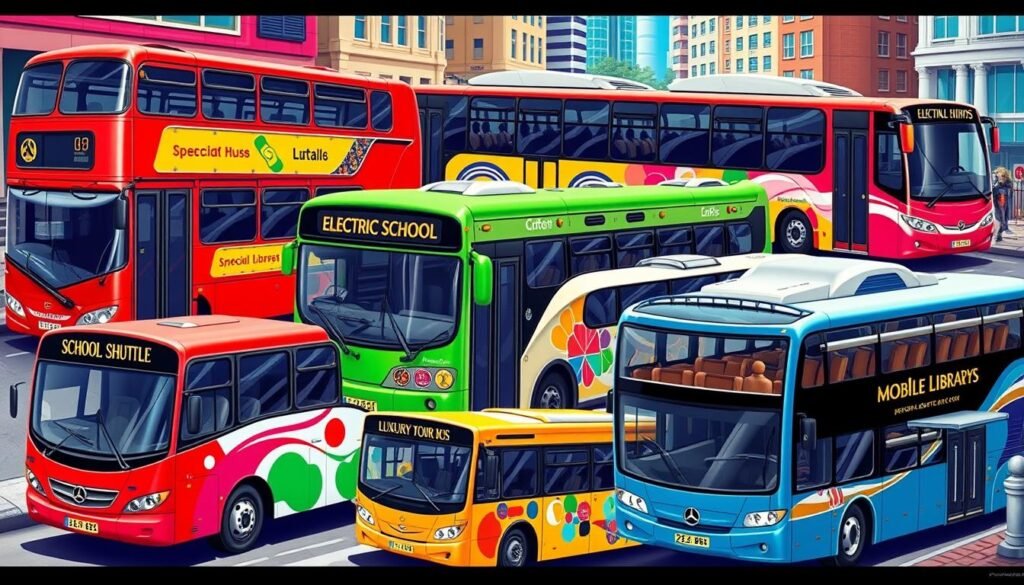
Type of Buses
Buses are key in today’s cities and long trips, acting as the heart of public transport. They carry many people and the driver, making travel better than driving alone1. You see yellow school buses in America and double-decker buses in the UK. Each type meets the needs of different places and people.
In Malaysia, the bus industry is growing. Different bus designs help make travel easy and accessible for everyone.
What is a Bus?
The bus has a long history, starting in the 1800s. The word “bus” comes from the Latin “omnibus,” meaning “for all.”2 The first buses were horse-drawn and started in 1823 in Nantes, France2. They soon spread to Manchester, England in 1824 and London in 18292. The first steam-powered bus hit London’s streets in 18333.
“The bus is the most democratic form of transport, accessible to the poorest as well as the richest.” – Jaime Lerner, former mayor of Curitiba, Brazil.
The bus has come a long way, from horse-drawn to modern, eco-friendly models4. As we look for better ways to move around cities, the bus remains key. It connects people and shapes our cities.
The Versatile bus
Different Configurations and Designs
There’s more than just single and double-deckers. Bus makers have created special types for better access and use6. Low-floor buses are easier to get into, and step-entrance and guided buses have their own perks6. They also come in different seating setups, with amenities and fuel types like hybrids and electric6.

“The bus industry’s commitment to versatility is evident in the wide range of configurations and designs available, catering to diverse transportation needs and operational requirements.”
Specialized bus Types
There are many specialized bus types for different needs8. These buses are made for specific jobs, helping various groups and industries. They offer unique solutions for different situations.
| Bus Type | Application | Key Features |
|---|---|---|
| Shuttle Bus | Airport transfers, hotel shuttles, university campuses | Smaller size, fixed route transportation |
| Coach Bus | Long-distance intercity travel | Larger size, comfortable seating, onboard amenities |
| Tourist Bus | Sightseeing tours | Panoramic views, tourism-focused features |
| Offroad Bus | Military, remote applications | Designed for travel beyond normal roads |
| Police Bus | Crowd control, special events | Transports large groups of officers |

These buses show how buses can meet many needs8. They help with airport rides, tours, and more. The bus world keeps growing, giving solutions for all kinds of travel.
The Evolution of the bus
Now, the bus industry is focusing on green and efficient buses10. Hybrid, electric, and alternative-fuel buses are being used more. These changes help the environment and make buses safer and more comfortable for passengers10. The bus is becoming more important for future travel in Malaysia and worldwide10.











